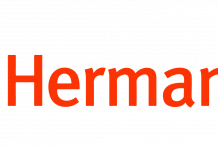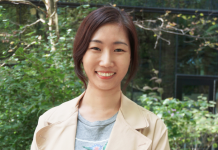(Unstructured Sit-down meeting with Courtney Falato and Beth Snoke)
Beth Snoke is the Director of Transportation and Traffic Management for The Ohio State University
Courtney Falato is the Smart Cities Relationship Director for The Ohio State University
-Courtney
“When we talk about mobility data on this side of campus we think about CampusParc ins and outs. We think about scooter data, bike data… OCIO’s office can get from Aruba [wireless provider on campus], people movement data… as each person represented as a dot and see the movement, kind of like a heat map. So we have even more granular people mobility data. What else are we missing when we think about mobility?”
-Beth
“We think about ridership.”
-Courtney
“Ridership of buses, CABS buses…”
-Beth
“Future growth data. For example the medical center is adding facilities out there [West Campus] We need to know future growth for what is expected out on west campus and where are those people coming from… Are they moving from hospital main over to ambulatory? There is going to be the Engie building… Who is new to campus and how many are coming? And where are they coming from?”
-Philip
“I saw from the plans that most of the parking lots will be out, so where will they be coming from?”
-Beth
“Well, there is out, but there is also new in. So I have some drawings on that I can share. There is also a need which isn’t there now, but it will be… for the internal movement in the west campus area. I’m always thinking what can we do that is kind of cool, and design for it right away, which… couldn’t we design for autonomous shuttles. Couldn’t we design for shuttle lanes. To move folks in between. They would be smaller vehicles like 12 or so people and they could be going through those buildings and commercial area as it develops; like social places such as restaurants, bars, etc. ”
-Courtney
Well, and you have Lyft Ridesmart. Beth’s group just got some funding to give rides for students from 9pm to 3am subsidized by the University.
-Beth
So it is open to all of you, if you needed a ride around campus late at night or to an apartment east of High Street… anywhere within the geofenced area, the University subsidizes the first 5 dollars of that ride. I think the most expensive it would be from end to end is around 7 bucks, so if you happen to be making that distance, the most you would pay is $2 or $3.
-Philip
So you get the data from the scooter companies as part of their contract with the University to operate, how does that relationship work?
-Beth
We are using a third party organization called ‘Ride Report’. Since we are going to be having 4 different scooter companies on campus, trying to get the data from all the different dashboards is pretty wonky, so we hired Ride Report to collect the data from the scooter companies and they will prepare a report for us. Currently, we have signed contracts with 2 scooter companies, Spin and Lyft, but the goal is to have all 4 in place by Oct 1. But even now we can get the data from them on heat maps so we can decide where we would like to install multi-use pathways across campus. We can tell where they are starting and where they are ending.
-Philip
If you have any current plans in store for these multi-use pathways, that would be very useful in seeing what we have coming, so that I can incorporate that into the landscape.
-Courtney
“Another thing I would not discount is that, I saw an article on this, that Purdue has robots delivering food on campus… So lots of colleges are moving to this new model, especially with these large campuses. It is hard to get the delivery people into… how can we use robots to mine and get… so it’s another thing on the sidewalk and they are very low to the ground… they are really cool. George Mason University outside of DC, Purdue, someplace in California is doing it. When we think about mobility we think about things that will be taking up space on the sidewalks and pathways. We think about drones and so we have a gentleman on campus, Jim Lawson, he is in charge of a lot of the drone work around here, so he has been talking about Helioports, etc. That is something that will be around in the next 5 to 10 years, so we have to think about that. UberAir would require helioports to operate. So Beth would then be Transportation, Traffic management and Helioports… Let’s keep adding… So when it comes to mobility on campus, Beth is going to be a valuable resource in connecting you with the resources, people and data that is publicly available. “
-Beth
We are also, right now, we just started our comprehensive transportation parking plan. We hired a consultant Stantec and MBBJ. MBBJ is the local firm. Stantec is the firm out of Boston. They did a site visit last Thursday and Friday. We already had phase 1 and phase 2 of the plan, but this is phase 3. And largely, phase 1 and 2 weren’t implemented because of funding so they are trying to help us figure that element out too. They are also pulling what data we have available and what should we be doing going forward, so there may be some information there, being gathered by them, that you may be able to use too.
-Philip
Do you have any other helpful advice I might be able to benefit from?
-Courtney
“When you are speaking about this topic, you’ll want to define where you are talking about, because I was in a meeting for Newark Campus, and they are starting to have mobility issues cropping up as more and more from the regional are wanting to either socialize more in, or use their meal card in (because it is unlimited on Saturdays).. When we talk about mobility as Ohio State as a statewide entity, that presents a whole host of hub and spoke type challenges but also in the name of mobility, opportunities to connect with micro-transit and other options.”
Analysis:
I was able to get valuable insight into the transportation ecosystem of The Ohio State University as well as redefine my problem. For starters, I am now looking into the redesign of the mobility ecosystem on The Ohio State University’s with the aim to address the need of mobility assistance incorporated into the Framework 2.0 expansion of main to west campuses. They identified for me the types of data that would be of great assistance for the scope of my problematic, and tell me why that data is applicable. They were also able to give me insight into what sort of factors I would want to be thinking about as I encounter the problem. They even introduced me to some Public Private Partnerships (P3s) that I wasn’t aware of – such as the Lyft Ridesmart program. Each of these insights tell a story of the direction that we are headed and what kind of growth data I might be applying to arrive at the best possible design scenario. Also, that I should keep in mind the connections to satellite campuses to keep the solution as well rounded as I can.



